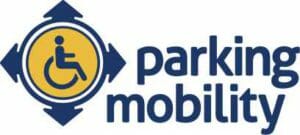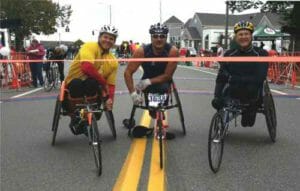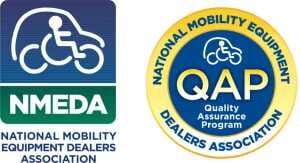Handicap Parking Violators – There Is An App For That
By: Brendan Keefe, bkeefe@wcpo.com
NEWPORT, Ky. – Why was a man in a wheelchair parking in the very last space in a strip mall parking lot?
“There were no handicapped spots available,” said Paul Mohr, a man fighting against the physical limitations of multiple sclerosis.
Mohr was going to a gym in his wheelchair to keep up his strength, but there was no place to park his ramp-equipped van near the entrance.
“I need one where the right side will be accessible to deploy the ramp,” Mohr said.
When the only van-accessible spot is taken by someone else with a handicapped placard — or a driver without one — Mohr is forced to go to the end of the lot where he can be sure no one will park next to him, blocking the ramp.
How is it that the law, designed to allow people with disabilities to park closer, now has them parking farther away than anyone else?
The Americans with Disabilities Act , passed in 1990, prescribes a graduated formula for determining the number of accessible spaces depending on the number of total spots in a given lot. For example, a lot with up to 400 spaces must have at least eight handicapped parking spaces, but only one has to be van accessible.
The hash marks on the side of those spots are supposed to keep the area clear for ramps, wheelchairs and people needing more room to get in and out. Instead, some people use them to park their cars, motorcycles, and shopping carts. “[The carts are] located where my ramp would deploy, and I’m unable to park there at all,” said Heather Sturgill with the Center for Independent Living Options . Sturgill has quadriplegia, and she can’t get out to move the shopping carts because they’re blocking her ramp. She’s trapped.
“Vans need the spots that are designated for vans,” Sturgill said.
Anyone with a handicapped permit is allowed to park in the van space, which is usually taken first because it’s right up front.
Twice As Many Permits
There are 1.2 million active handicapped parking permits in Ohio, according to the latest figures from the Bureau of Motor Vehicles. The state is issuing twice as many accessible parking plates and placards compared with a decade ago.
Meanwhile, the number of spaces required by the ADA has remained the same. This has left drivers with different levels of disabilities competing for limited real estate in local parking lots. People with disabilities told the I-Team that there’s no common sense in the law. A strip mall with a dialysis center is not required to have any more spaces than a strip mall with a gym.
In most states, the law is “one permit fits all” with no distinction between levels of disability. So people like Sturgill and Paul are often left with no choice but to park in the farthest reaches of a parking lot. “The only option I’m really left with is to go a really far distance away and take up two spots,” Sturgill said. “There really is no other option.”
Violators Still A Problem
There have been violators as long as there have been handicapped parking spaces, despite the threat of a $250 fine in Ohio.
It’s a low-priority offense, with the entire Cincinnati Police Department issuing fewer than one ticket per day on average.
Outside a gym in Oakley, the I-Team was recording when a para-transit van designed to transport school children with disabilities pulled up to one of the van-accessible spots. The driver got out in a track suit and carried his gym bag inside. He wasn’t there to pick up or drop off someone with a disability. He was there to work out.
When he came out, the driver admitted he had no disability. “My bad,” he said as he closed the door and drove off.
How Can You Help?
There’s An App For That
Parking Mobility is a smartphone app that allows users to report violators. The app cues the user to take pictures of the vehicle and mark its location. The website then sends those reports to local authorities.
But with so many permits out there now — one for every seven drivers in Ohio — there are fewer obvious violators. Some have placards hanging in the windshield even with no disability at all.
The law does not require family members to turn in a permit when a loved one dies. That means there are active permits out there long after the people who applied for them are gone. In Ohio, a “permanent” placard is good for up to five years.
South Carolina recently added photographs of applicants to all its accessible parking placards to keep their friends and relatives honest.
Expired Placards Hide In Plain Sight
Ohio placards feature a hard-to-see expiration date. While Kentucky and many other states use large numbers in high contrast so expiration dates can be seen by a passing officer, Ohio uses a series of punch holes that can only be read when close to the windshield.
Where Kentucky puts the expiration date, Ohio features a large registration number instead. So an expired placard can work for months or years in Ohio with few people taking notice.
How many times have you seen someone get out of a car parked in an accessible spot and run into a store?
Paul Mohr told the I-Team, “now when I see people get out of the car, I’ll be like, ‘you seem to have a perfectly good set of legs.’”
Don’t Judge A Book by Its Cover
Pete Mosher would fit that description.
“Why is he parking in the handicapped space? He looks like a perfectly healthy guy,” Mosher imagines people are asking themselves when they see him get out of his car.
Mosher is 32 years old and seemingly the picture of health, but he has a potentially-fatal lung condition. He has 15 percent of the breathing efficiency of the average person his age, and a long walk can reduce his blood oxygen concentration to dangerous levels.
“It’s like taking a full balloon and trying to push even more air into it without being able to let any of that volume out,” Mosher said.
The I-Team drove with him through a College Hill grocery store parking lot as he searched for an open space close to the store. He has a placard, but there were other permit holders idling in the aisle waiting for a handicapped spot to open.
When he did get out, we could tell he felt self-conscious because of his invisible disability. A friend suggested he carry a cane as a prop, but he fears it won’t be long before his degenerative condition may solve that dilemma for him.
Meanwhile Mosher tries not to question others when he sees them get out on two feet with a valid permit.
“You know I might look twice to be perfectly honest, but I try to do the best I can not to judge because we don’t know what other people are struggling with, what battles they’re fighting,” he said.
Superior Van and Mobility is helping its customers in this very matter by providing notification stickers for their vehicles. These stickers are aimed at notifying others who attempt to park next to a ramp van, aware of the access needed to load and unload the passengers of the vehicle. (example below)
Superior Van and Mobility decided to help its customers after the numerous reports received of them returning to their vehicles only to find themselves stranded outside with no access to enter. “It’s sad to think, these customers had no other option but to wait for the other driver to return,” said Richard Maxwell, Marketing Manager at Superior Van and Mobility.
Out of need, Superior decided to develop this brightly colored sticker to be placed on the side window of the van and on the rear window, if so desired. The sticker is aimed to alert the driver pulling into the adjacent parking space to use caution, and to be aware of the room needed by the individual in the ramp van.






